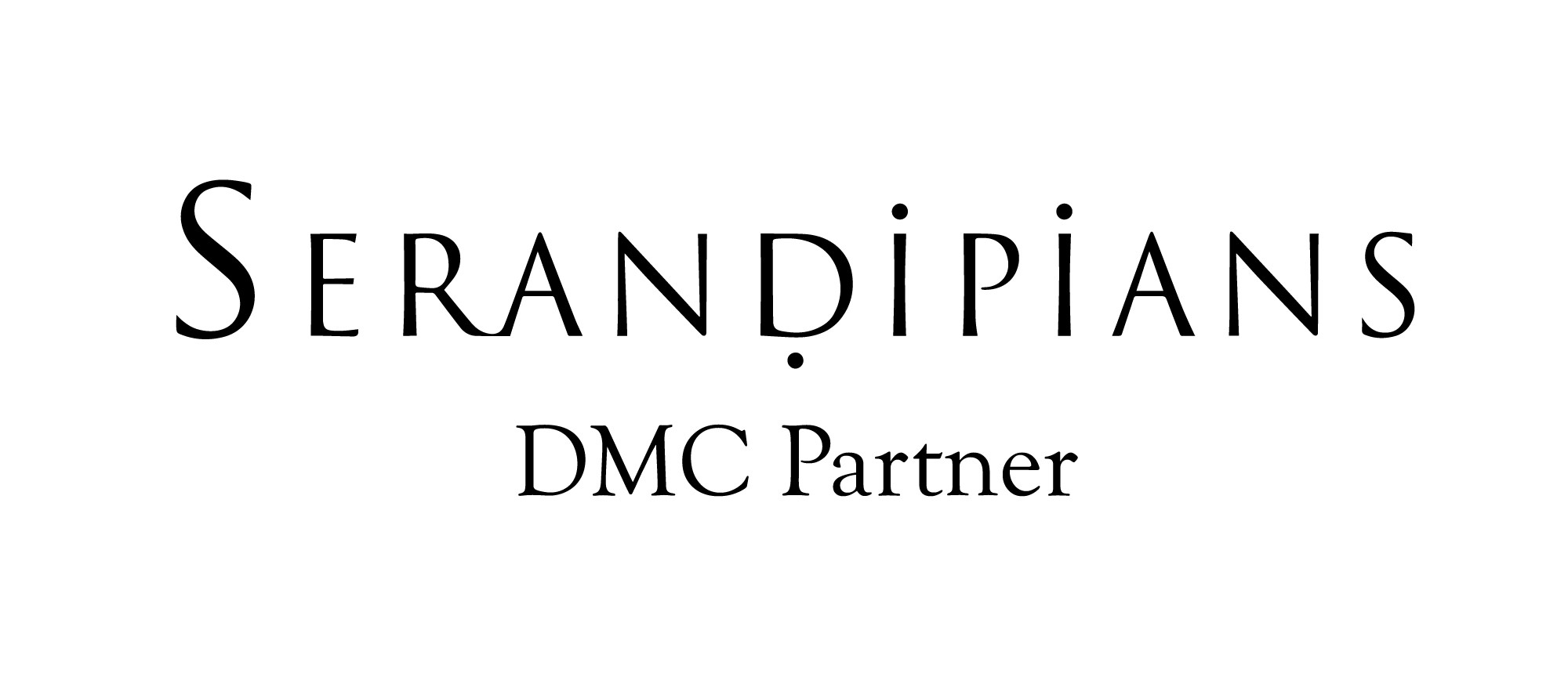Australia Travel Information
Things to know before you go
From what to pack (and what you’ll need to leave at home) to how to get around and what to tip, we’ve put together a collection of some of our most frequently asked questions and practical travel information.
This section provides essential travel information for Australia including: climate and currency, time differences and dialling codes, visas and other entry requirements.
There’s also information about the nation’s food and drink, flora and fauna, history and culture; but if we have left any of your travel questions unanswered, our locally-based Travel Design teams are here to provide in-the-know and up-to-the-minute advice. Contact us.
Australia
Important Information
All international visitors (except Australian and NZ passport holders) require a visa for entry into Australia. All visa applications must be made before arriving in Australia. The length of stay and purpose of visit will determine the visa required. Short stay holiday visas (up to 3 months) can be arranged electronically for most passport holders.
Check www.eta.immi.gov.au for further details.
All visitors must carry a passport valid for the period of intended travel in to and out of Australia.
To help protect Australia’s unique environment, certain foods, plants, animal products, weapons and drugs are subject to customs controls or prohibition. We advise you check www.abf.gov.au for further information before carrying any of these products into Australia.
The following hand luggage restrictions apply to all passengers arriving on international flights, passengers who are transiting in Australia and passengers travelling on the domestic leg of an international flight within Australia. Liquid, aerosol or gel products (including toiletries) must be in containers of 100mililitres or less (broadly equivalent to 100grams or less). The containers must be carried in one transparent, resealable plastic bag (no larger than 20cm x 20cm or 15cm x25cm). Containers larger than 100 millilitres, even if only partially-filled, will not be allowed through the security screening point.
Necessary prescription and non-prescription medicines (including special dietary products), medical items and baby products are exempt from the 100 ml limit but will need to be presented separately at airport security screening along with any supporting documentation (eg: prescription or medical certificate in the same name matching the passengers boarding pass) and are permitted at the security officer’s discretion.
Other prohibited hand luggage items include weapons, explosive, flammable and caustic materials and any items with sharp edges or points capable of injuring someone. Any prohibited items or excess liquids, aerosols or gels will be confiscated at airport security.
Valuable items such as lap-tops, cell-phones and cameras are accepted as cabin luggage but will be subject to security screening checks.
No particular health certificates or vaccinations are currently required for entry into Australia unless visitors are arriving from, or have visited, a yellow fever infected country within 6 days prior to arrival in Australia.
Geographic isolation, strict quarantine laws and a high standard of health care contribute to Australia being a very healthy country in which to travel.
However, should medical attention be needed, the citizens of many countries (including UK, Ireland, NZ, Italy, Netherlands, Sweden, Norway and Finland) are entitled to subsidised health services for medically necessary treatment under the reciprocal health care agreement with Medicare, Australia’s national health scheme. www.humanservices.gov.au has further details.
In any event, it is strongly recommended that all travellers take out comprehensive health insurance before departure to cover the duration of their stay in Australia.
Food hygiene standards and water quality are very good. It is generally safe to eat anywhere and drink tap water without concern.
Medicine brought into Australia for personal use must be declared on arrival. The issuing doctor’s prescription or a letter outlining the medicines carried is recommended. If additional prescription medicine is required whilst travelling in Australia, the prescription must be written by a doctor in Australia.
Some special precautions:
• Always wear a high protection sunscreen. Pack a hat, sunglasses and try to minimise your time in the midday sun.
• Always observe safety signs and warnings regarding swimming restrictions.
• Always swim between the yellow and red flags on the patrolled surf beaches.
• Insect repellent is recommended, particularly for visitors travelling in tropical parts of Australia.
There are three major time zones in AustraliaEastern Standard Time (GMT + 10): NSW, ACT, Victoria, Queensland and TasmaniaCentral Time (GMT + 9.5): Northern Territory and South AustraliaWestern Time (GMT + 8): Western AustraliaDaylight savings (Summer Time) is observed by most Australian states. NSW, ACT, Victoria, Tasmania and South Australia wind their clocks forward one hour from early October, until early April. Queensland, Western Australia and the Northern Territory do not observe daylight saving.For the current time in various Australian centres visit www.timeanddate.com/worldclockUS visitors should also be aware that Australians write the date in day/month/year format.
The client accepts that Southern Crossings at all times acts only as an agent for all accommodations, excursions, airlines and transport operators and that Southern Crossings is not liable for in relation to any of these principal’s services. All bookings are made subject to the terms and conditions and limitations of liability imposed by service provider principals. Southern Crossings excludes liability for the supply of all leisure and recreational services. Southern Crossings strongly advises all clients to take out comprehensive travel insurance at the time of booking to protect themselves against the loss of deposit, cancellation charges, medical expenses or loss of personal possessions
There are three major time zones in Australia
Eastern Standard Time (GMT + 10): NSW, ACT, Victoria, Queensland and Tasmania
Central Time (GMT + 9.5): Northern Territory and South Australia
Western Time (GMT + 8): Western Australia
Daylight savings (Summer Time) is observed by most Australian states. NSW, ACT, Victoria, Tasmania and South Australia wind their clocks forward one hour from early October, until early April. Queensland, Western Australia and the Northern Territory do not observe daylight saving.
For the current time in various Australian centres visit www.timeanddate.com/worldclock
US visitors should also be aware that Australians write the date in day/month/year format.
Australia is well renowned for its endless blue skies and bright sunshine. Visitors should however be aware that the seasons are reverse of those in the Northern Hemisphere and that Australia can broadly be divided into two climatic zones.
The tropical north (Far North Queensland, the Top End and the Kimberley) has two distinct seasons. The ‘green’ season runs from November to April with the heaviest rainfalls usually in January–March. Temperatures range 24–33°C (75–91 Fahrenheit) and may be accompanied by high humidity. It is a spectacular time to see the region’s rainforests and waterfalls. The ‘dry’ season (May to October) is characterised by clear blue skies and warm sunshine, averaging between 16–26°C (61–79 Fahrenheit) and is perhaps the most comfortable time to enjoy the tropics.
Australia’s southern states largely enjoy a temperate Mediterranean style, climate. Warm summers and cool winters can usually be enjoyed without extremes. The further south you travel, the more distinct the four seasons become, with the country’s most southern reaches and highlands experiencing frosts and winter snow falls.
Summers by the beach in Sydney, clear blue skies over Kakadu in the Australian winter months, spring wildflowers in Western Australia or the autumn colours around Canberra – Australia’s geographical and climatic diversity make any time a good time to visit. December through to February is the ideal time to join in the Australians’ celebration of summer. It is also a popular holiday season with the locals, particularly for travel along the east coast. However, spring (September to November) and autumn (March to May) are perhaps the best times to visit when combining travel to both the northern and southern parts of the country.
The bureau of meteorology www.bom.gov.au provides information on current weather conditions and general climate information specific to each part of the country. Our Australian Climate Guide also provides useful information about the weather you can expect
In the tropics, lightweight casual clothing is suitable at all venues, all year round. In the southern temperate regions layers are the best solution for warm days and cool nights, and smart casual clothing is the norm almost everywhere. Warm clothing is recommended for visiting the southern states between May and September.
Must Packs include – comfortable walking shoes, swimming costume, hat, sunglasses, high protection factor sunscreen, a cardigan or jumper (even the Red Centre can become quite cool of an evening) and of course your camera.
Please note, that there may be luggage restrictions on some regional flights (eg. Cairns to Lizard Island) Visitors are therefore advised to bring a small bag to be able to transport some of their luggage for this part of their holiday. Storage facilities are usually available for the excess luggage at departing airports.
Arty, cultural, sporting and musical, Australia celebrates all year round with a full calendar of colourful events and festivals. For entertainment details in each of Australia’s capital cities during your stay visit the Australian State and Territory tourism websites.
New South Wales (incl Sydney) www.sydney.com
Victoria (incl Melbourne) www.visitvictoria.com
ACT (incl Canberra) www.visitcanberra.com.au
South Australia (incl Adelaide) www.southaustralia.com
Western Australia (incl Perth) www.westernaustralia.com
Northern Territory (incl the Top End and Red Centre) www.travelnt.com
Queensland (incl Brisbane, Cairns and Great Barrier Reef) www.queensland.com
Tasmania www.discovertasmania.com.au
ANNUAL NATIONWIDE PUBLIC HOLIDAY AND SCHOOL HOLIDAYS
New Year’s Day 1st January
Australia Day 26th January
Easter Good Friday and Easter Monday
ANZAC Day 25th April
Queen’s Birthday (except WA) Second Monday in June
Christmas and Boxing Day 25–26 December
Note: If these days fall on a weekend, the holiday is usually celebrated the following Monday.
In addition, there are several individual state holidays
The Australian school year is divided into 4 terms and school holiday dates vary from state to state. The summer months, in particular the weeks over Christmas / New Year, are peak holiday season for Australians. It is therefore advisable to book accommodation and touring well in advance over this period.
For public holiday and school holiday dates across Australia visit www.australia.gov.au
The list of stunning settings for a relaxed memorable wedding in Australia is limited only by your imagination. Couples wishing to get married in Australia must both be over 18 years of age and are required to lodge a Notice of Intended Marriage with an authorised celebrant at least one month and one day prior to the proposed date of marriage. This form, and a register of authorised marriage celebrants, is available from www.ag.gov.au. These forms, once appropriately witnessed, may be lodged from overseas and there are no minimum residency requirements for getting married in Australia. In addition, couples intending to marry will also need to bring to Australia:
• Full birth certificate (or adoption certificate, if adopted)
• Official evidence of dissolution of any previous marriages; either by divorce (Decree Absolute) or death (death certificate and previous marriage Certificate).
• Official evidence of any other name changes.
All documents must be original and, if these are in another language, accompanied by an official English translation.
In order to be legally recognised in your home country, many European governments require Australian issued marriage certificates to be further ‘authenticated’ by means of an Apostille Certificate which can usually be arranged with the assistance of your marriage celebrant and must be done before you leave Australia.
Further information about getting married in Australia is available from your local Australian embassy or consulate
The electrical current in Australia is 230–240 volts (AC 50Hz). The Australian three pin power outlet is different from those used in Europe and the US. Visitors will therefore need an adaptor for electrical appliances and may need a voltage converter for 110v appliances without a 110/240v volt switch.
Universal outlets for 240v or 110v shavers are found in most leading hotels.
Getting Around
Many of Australia’s key attractions provide access for those with limited mobility and a number of sites have also begun to address the needs of visitors with visual or aural impairments.
‘Easy Access Australia’ (www.easyaccessaustralia.com.au) guidebook provides useful information about accessible travel in Australia.
Hiring a car is a great way to enjoy the flexibility of getting to know a particular region at your own pace. Australians drive on the left-hand side of the road. Speeds and distances are given in kilometres.
International visitors can drive in Australia using their valid overseas licence. If the licence is not written in English, an International Driving Permit or official English translation must also be carried with the licence when driving.
Drivers must carry their licence with them at all times and should be aware that Australia strictly controls drink driving, the use of seatbelts and speed limits with random checks and cameras.
When designing an itinerary, visitors planning to self-drive should note that rental cars are restricted to roads which are properly formed and constructed as sealed, metalled or gravel roads. Additionally, restrictions apply with regards taking hire cars on car ferries and driving beyond the city limits in Western Australia and the Northern Territory between dusk and dawn.
The following websites may be of further assistance for route planning and information on local petrol prices: www.mynrma.com.au/holidays/holiday-finder and www.travelmate.com.au.
We suggest you also check with your local motoring association for reciprocal roadside assistance and other touring benefits with Australian affiliates.
Metered taxis are available in all major cities and towns. You can book a taxi by phone, hail a taxi in the street or get one from a taxi rank which can usually be found at transport terminals, major hotels or shopping centres. A light and sign on the roof shows when a cab is available. There is a minimum “flagfall” charge, then a charge for the distance travelled.
Small additional charges are made for luggage, telephone reservations and, where applicable, tolls; otherwise, the amount payable is shown on the meter.
With a land area of 7.7million square kms, Australia is the 6th largest nation in the world – only marginally smaller than mainland USA, measuring some 4000kms (2500 miles) east to west and 3200km (2000miles) north to south.
A large part of Australia’s appeal is its geographic diversity and wide open spaces. This in turn means that travelling between attractions can also span large distances. Perth to Sydney for example is approximately 5 hours flight, 5 days in a car or 3 nights on a train. The Great Barrier Reef is the same area as the UK and Ireland, and the state of Western Australia is the same size as Western Europe. For this reason, internal flights are often the best means of travelling between attractions and regional centres to maximise time at the destination.
For maps and further information on distances between attractions visit https://maps.google.com.au.
Spending
Australia’s decimal currency is divided into 5, 10, 20, 50 cent and $1 and $2 coins; notes are in denominations of $5, $10, $20, $50 and $100.
The safest way to carry larger amounts of money is in the form of a credit or debit card. “Plastic” payment is widely accepted across the nation in shops, restaurants, hotels, petrol stations and a wide network of ATMs. Any card connected to the international banking network (Cirrus, Maestro, Plus and Eurocard) should work with your regular PIN. Visa and Mastercard are accepted almost everywhere, whilst Diners Club and American Express are not as widely accepted. A minimum purchase may be required to use your credit card in some shops.
Foreign currency and travellers cheques can be exchanged at banks, travel exchanges and hotels in the major centres. Most banks across Australia are open Monday to Friday 9.30am-4pm. Check www.xe.com/currencyconverter/ for current exchange rates.
Amounts of $AUD10,000 or more (or foreign currency equivalent) must be declared on arrival and departure.
Tipping is entirely discretionary in appreciation of good service. Employees do not depend on gratuities for their income nor are service charges routinely added to accounts by hotels and restaurants; however a tip of up to 10% in recognition of excellent service has become the custom in cafes and restaurants.
You should not feel obliged to tip tour guides or concierge, it is however appropriate where service has been exceptional.
Taxi drivers and hotel porters also appreciate a small change tip for their services
Shops in most major centres are open 7 days a week: 9.30am to 5pm Monday to Friday (with late opening one night a week – usually Thursday or Friday) and 10am to 4pm on Saturdays, Sundays and Public Holidays. Some supermarkets and petrol stations are open 24/7. Almost all shops close on Good Friday, Christmas Day, Boxing Day and New Years Day.
Wondering what to buy as a memento of your stay in Australia?
• Australian opals in all different colours, Broome pearls and Argyle diamonds all make stunning souvenirs.
• Wear a slice of Australia back home with contemporary designs by Ginger and Smart, Zimmermann, Alannah Hill, Leona Edimston, Alex Perry, Marcs, Saba, Akira Isogawa or Sass and Bide; or more authentic Australian items from RM Williams, Drizabone or Akubra.
• Let your tastebuds reminisce with some local wines, Haighs fine chocolates or the quintessential jar of Vegemite.
• An original Aboriginal artwork will make a stunning talking piece on your walls back home.
Australia’s many colourful local markets are also a great place to pick up a unique souvenir, often with the opportunity of ‘meeting the maker’.
Shoppers should be aware that Australian clothing and shoe sizes are different to the US and European sizes. Check www.onlineconversion.com for a guide to local sizes.
All goods and services are subject to a 10% Goods and Services Tax (GST) which is included in the displayed price. However international visitors may be entitled to a refund under the Tourist Refund Scheme. The refund applies to goods with a total value of $AUD300 or more in one transaction (substantiated by a tax invoice) that travellers carry with them as hand luggage when leaving the country.
The refund can be processed by credit card, cheque or EFT to Australian bank accounts at Tourist Refund Scheme booths after passport control on departure. Check www.border.gov.au for further details.
Communication
The country dialling code for Australia is +61.
The outgoing international code is 0011.
To look up local phone numbers visit www.whitepages.com.au or www.yellowpages.com.au
There are three mobile phone networks in Australia (Optus, Telstra and Vodafone). All three offer 4G services and most visitors from Europe and Asia will be able to use and Australian SIM in their existing handset. A number of smaller Mobile Virtual Network Operators also provide competitively priced pre-paid plans operating on one of the above networks. Most major providers have stores or stands at Australia’s international airports; and more also offer phone and SIM packages for visitors without a compatible / unlocked handset. US visitors should check with their local provider with regards their phone’s compatibility.
Mobile coverage is generally good around the major population centres, however some remote outback locations and islands do not have mobile coverage.
Ambulance, fire brigade or police can be called free of charge from any phone by dialling ‘000’. Newer model digital phones can connect to the service using the international standard emergency number ‘112’.
Australian ethernet connections use an RJ45 plug, for which your laptop may need an adaptor. You should also check your laptop’s voltage range. If it is unable to be switched to “240v”, you will also need a voltage converter. An Australian three-pin plug is required to connect to local power supplies.
Additionally, there is a good network of wireless hotspots in regional centres around Australia.
A selection of local aircards is also available.
Australia operates on the PAL television and video system, and is in DVD zone 4: South America and Australia
About Australia
Australia is a vast island continent, divided into 6 states and 2 territories. It is a land of contrasts: the narrow coastal strip to the east of the country is bounded by the Great Dividing Range, west of the range lies the dry inland heart of the country, where the rainfall is slight, the vegetation is sparse and the lakes are usually dry. In the south west, there is a fertile coastal plain, while further north along the west coast, the dry country runs right down to the sea. In the north of the country, a tropical region is home to some of the oldest rainforests on Earth.
Sparsely populated and geographically isolated, Australia showcases some of the world’s most pristine natural environments including 16 World Heritage Listed Sites from Uluru to Kakadu, the Great Barrier Reef to the Tasmanian Wilderness.
Australian food and drink are a large part of the visitor experience, whether it be fresh seafood on the barbeque, a schooner of cold beer at an outback pub, fine dining overlooking Sydney Harbour or a glass of chardonnay at the cellar door. Thanks to a multicultural population of food lovers, an abundance of fresh ingredients from both the land and the sea, and a new generation of internationally acclaimed and highly innovative chefs, Australia has no shortage of dining options to tantalise any visitor’s tastebuds.
Some of the culinary highlights on offer include –
• Seafood: In addition to all of the perennial favourites, try Barramundi (freshwater fish), Balmain and Moreton Bay Bugs (small crustaceans), Yabbies (freshwater lobsters), Pacific Oysters and Tasmanian Salmon.
• Meat – Australian beef and lamb have an excellent reputation and are exported around the globe. For the more adventurous, there is also kangaroo, emu and crocodile to sample.
• An unlimited selection of tropical and cool climate fruits and nuts.
• Countless Australian wines of all varieties and numerous mainstream and boutique beers to quench the thirst.
Most special dietary requirements can be widely catered for. Please advise us in advance of any specific dietary requirements so that we may inform the accommodation and tour operators accordingly.
Some useful tips and terminology before heading out to dine:
• Schooners, Pots, Pints and Middies – all refer to the bewildering variety of beer glass sizes which vary from state to state. Furthermore, a “stubby” refers to a 375ml bottle of beer.
• BYO – Many restaurants are “BYO” which means you can ‘bring your own’ bottled wine to drink with the meal. A small corkage fee may be charged by the restaurant.
• The legal drinking age in Australia is 18 years.
Check out www.bestrestaurants.com.au for a good selection of restaurants in each of Australia’s main centres or ask for a copy of Southern Crossings’ dining guides.
50 million years of isolation has led to a unique evolutionary sanctuary of plants and animals. Australia has an exceptional range of species with more than 80% of the native mammals, frogs, reptiles and flowering plants found nowhere else in the world.
Endemic mammals include the kangaroo, koala, platypus, echidna, possum, wombat and dingo. There are also a number of interesting birds, such as emus, brightly coloured parrots, cockatoos and the laughing kookaburra.
Distinctive plants include the ubiquitous gum tree or eucalypt, of which there are some 700 species. Other common plants are wattle, banksia, waratahs, bottlebrushes, paperbarks and tea trees. Australia is also home to some of the oldest flora on the planet – from the tropical rainforests of the Daintree National Park to ancient pine forests towering over Tasmania, and the recent discovery of the Wollemi Pine in the Blue Mountains, thought to have been extinct since the Jurassic Era.
Aboriginal history in Australia dates back to around 70,000 years ago, when the first humans came across the sea from Asia. Conditions were favourable throughout the country and the population was widespread. However, at the end of the last Ice Age, inland lakes dried up and the Aboriginal population became more clustered around the coastal areas.
The Dutch were the first European to set eyes on Australia in the early 1600s but it was not until Englishman Captain James Cook led a scientific voyage in search of the ‘Great South Land’ in 1770, that the newly-discovered land was claimed for Britain.
Running out of prison space, Britain proposed to begin transportation of convicts to Australia. In 1788 the first fleet of convicts arrived in Sydney. Conditions in the new colony were extremely harsh and transportation was finally abandoned to the eastern states in 1852 and in 1868 to the west.
Meanwhile, the Aboriginal population was devastated both by European diseases and by conflict with white people. Within 100 years of white settlement, all that remained of Aboriginal society were relatively small groups in central and northern Australia.
Free settlers began to be attracted to Australia over the next decades, but it was the discovery of gold in the 1850s that really changed the face of the colony. The huge influx of migrants in search of their fortune, and several large finds, boosted the economy and irrevocably changed the country’s social structure.
In 1901, the separate states became a federation. Australia and its capital, Canberra, were born, but links to Britain were still strong and Australia remains a member of the British Commonwealth today.
Post-WWII immigration brought a flood of European immigrants to “the Lucky Country”, many of them non-British. The immigrants have since made an enormous contribution to the country, enlivening its culture and broadening its vision, the foundations of Australia as we know it today.
Australia has a population of approximately 26 million, most of whom live on or near the coast. The Eastern states and their capitals are home to the majority of the population, whilst regions such as the Kimberley are among the most sparsely populated areas on Earth.
Australia’s colourful history has bred a very multicultural population, with most Australians still either born elsewhere, or the children of people who emigrated to Australia – most commonly from the UK, Europe and South East Asia.
Whilst only 1% of the population today is Aboriginal, their culture may be observed in various museums, galleries and regions across Australia. “Dreamtime” legends told through dance, art and storytelling keep the essence of their culture alive.
The official language in Australia is English – though some visitors may require the assistance of a dictionary (www.aussie-slang.com) to decipher some of the “local lingo”.
PENGUIN BLOOM THE ODD LITTLE BIRD WHO SAVED A FAMILY
Bradley Trevor Greive and Cameron Bloom
An extraordinary true story of recovery, hope and courage as one injured bird and her human family learn to heal and celebrate life. Recently translated into a feature film
THE DRY JANE HAYES
Set in an outback town gripped in a two year drought this murder mystery is a page-turner. Recently translated into a feature film
FROM STRENGTH TO STRENGTH SARA HENDERSON
One woman’s amazing tale against the odds on an outback cattle station which visitors to Australia can now stay at Bullo River Station.
A FORTUNATE LIFE A.B. FACEY
The extraordinary life of an ordinary man who lived the rough frontier-life of a sheep farmer, survived Gallipoli and raised a family through the Depression. The book has also been adapted to a film
DOWN UNDER ALSOKNOWN AS IN A SUNBURNED COUNTRY BILL BRYSON
A humorous insight into Australia’s idiosyncrasies
A SHORT HISTORY OF AUSTRALIAMANNING CLARK
Captures Australia’s social, cultural and political transformation from the arrival of English convicts to the late twentieth century.
A SUNBURNTCOUNTRY STORIES OF AUSTRALIAN LIFE B.R COFFEY– EDITOR
An outstanding collection of autobiographical stories and short fiction about Australia and Australians.
THE HAPPIESTREFUGEE AHN DO
An uplifting autobiography of one of Australia’s leading comedians.
CLOUDSTREET TIM WINTON
This Miles Franklin award-winning novel chronicles the lives of two working-class Australian rural families who move to Perth in the 1940s and 50s. The book has also been adapted to a tv mini-series. See also Tim Winton’s ‘Dirt Music’ and “Breath”.
AUSTRALIA – TRUE STORIES OF LIFE DOWN UNDER LARRY HABEGGER
From the rainforest to the outback, from cycling across the Nullabor to surfing the coast, this book presents a colourful collection of travellers’ tales. Notable contributors include Paul Theroux, Tim Cahill, Bruce Chatwin, Robert Hughes and many more.
AUSTRALIA’S MOST UNBELIEVABLE TRUE STORIES JIM HAYES
A collection of yarns and tales from the unknown and the forgotten to the surprising and completely inexplicable.
For young readers
PLAYING BEATTIE BOW RUTH PARK
Follow Abigail’s adventures as she travels back to colonial Sydney. Much of the novel is set in and around the Rocks area of Sydney.
For Children
SNUGGLE POT AND CUDDLE PIE MAY GIBBS
Enchanting adventures of the mythical gumnut babies and other characters based on Australian native plants.
POSSUM MAGIC MEM FOX
Award-winning picture book about Australian bush animals.
THE ADVENTURES OF BLINKY BILL DOROTHY WALL
Follows the adventures of a mischievous koala named Blinky Bill.
WOMBAT STEW PAMELA LOFTS AND MARCIAVAUGHN
A clever dingo is thwarted in his attempts to make a wombat stew, when the other bush animals successfully band together to trick him.
I could never have done it without Alexandra's help and guidance!
She made me look like a total rock star."
I highly, highly recommend having them plan your trip to New Zealand!"
Would we go back? You bet! Would we use Stuart’s team? Of course!"
If you want a first class trip to New Zealand, I wouldn’t use anyone else!"
It was an awe-inspiring once-in-a-lifetime trip curated magnificently by Sarah and Sara.
I will be forever grateful for their kind and thoughtful advice and support."
From premier rooms, to chefs table seatings at restaurants, to champagne greetings and surprise turn-in treats,
we felt like we were VIPs the entire trip…It was truly a unique and unparalleled trip for us"
it really was the perfect trip… We couldn’t have been more pleased."
You are absolutely magnificent!
exceeded our expectations."
many many many thanks!!!!!!"
Planning a 7 week trip is daunting enough without the complications of COVID cancellations, rebookings, and closures. Yet every connection, every transportation detail, every accommodation, every meal, everything was flawless ... the best guides, our accommodations and the excellent itinerary and pacing, made for a perfect trip.
We can't thank Southern Crossings enough for making this trip all, and more, than we had imagined. You allowed us to see the best of your countries: the people, the beauty, the culture. Five stars, a blue ribbon, and a gold medal to everyone at Southern Crossings!"

















